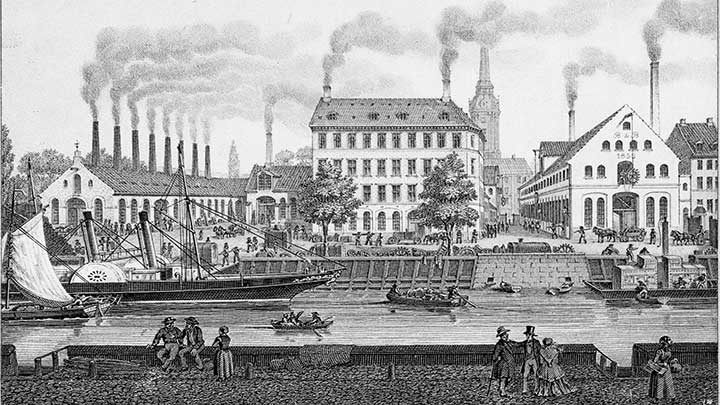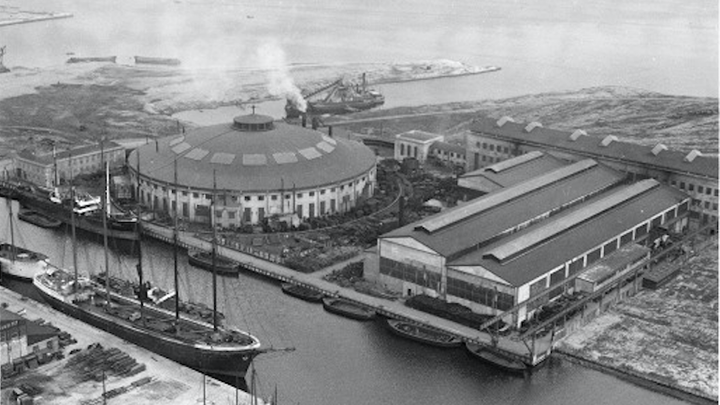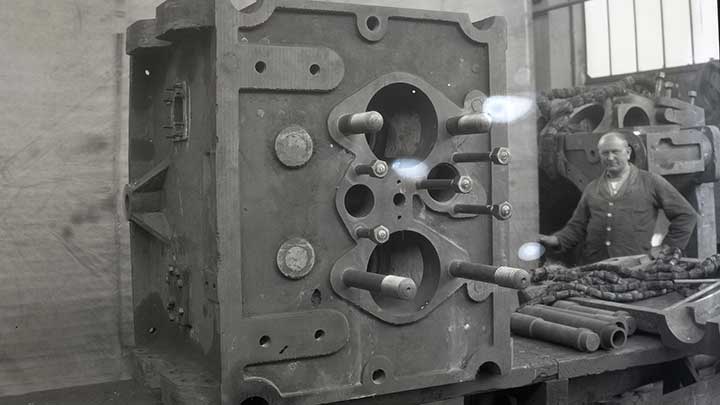Developement & production Copenhagen
Copenhagen is home to the Research Centre Copenhagen (RCC) where two, full-size engines allow us to test new engine types, parts and future fuel systems such as ammonia. Next door to RCC, we have a facility that manufactures key spare parts, as well as a PrimeServ Academy where customers and own staff are trained in the optimal use of our technology.
Our engines serve a multitude of marine applications and segments and are manufactured by a family of licensees, now primarily based in Asia.
Low-speed engines are the reliable and preferred choice as prime mover for ocean-going merchant vessels, such as bulk carriers, oil and gas tankers and container ships.
Futureproof solutions for the Maritime Energy Transition
Our Copenhagen operations demonstrate our commitment to developing zero-carbon fuel solutions and drive the world’s maritime climate agenda. Our focus is on developing futureproof technologies that are viable and relevant for decades. A case in point is the successful dual-fuel conversion projects we have implemented, which enable shipowners to retrofit their fleet, so they can operate on liquefied petroleum gas. Likewise, we are at the forefront of delivering engines that can operate on future fuels such as ammonia. Our digital solutions meanwhile enable our engines to operate more efficiently and stay connected.
Technology innovations
Two-stroke
The benefits of methanol
Products and business activities in Copenhagen
Our recently remodeled academy is located in the center of Copenhagen, next to our head office.
Our professionally trained instructors, who have extensive knowledge and experience of all two-stroke products, do their utmost to increase the participant’s competencies and understanding of the latest engine technology.
The academy is equipped with a full-size 6S35MC engine where we conduct full-scale training. The engine is equipped with used parts with different wear patterns in order to give the most realistic training sessions possible.
Career and training offers
Address & local contacts
Senior Vice President, Head of Two-Stroke Business, Country Manager – Bjarne Foldager Jensen
Teglholmsgade 41, 2450 København
bjarne.foldager@man-es.comHead of Licensing, Patents & Trademarks – Klaus Engberg
Teglholmsgade 41, 2450 København
klaus.engberg@man-es.comHead of R&D Two-Stroke – Brian Østergaard Sørensen
Teglholmsgade 41, 2450 København
brian.soerensen@man-es.comChief Financial Officer – Tommy Andreasen
Teglholmsgade 41, 2450 København
Head of PrimeServ Denmark – Michael Petersen
Teglholmsgade 41, 2450 København
michael.petersen@man-es.comHead of Production – Jens-Ole Nielsen
Teglholmsgade 41, 2450 København
jens-ole.nielsen@man-es.comHead of Human Resources – Marie Brinkgaard
Teglholmsgade 41, 2450 København
Head of Promotion and Customer Support – Thomas Storgaard Hansen
Teglholmsgade 41, 2450 København
Head of Marine Communications – Nils Søholt
Teglholmsgade 41, 2450 København
History of Copenhagen site
1843 – H. Baumgarden founds company and is joined by C.C. Burmeister. After Baumgarden retires in 1861, W. Wain joins Burmeister and forms B&W in 1865.
1898 – B&W signs contract with Rudolf Diesel.
1911 – World's first ever ocean-going diesel-powered ship, M/S Selandia, is delivered to ØK.
1933 – B&W delivers the world’s largest diesel engine to H.C. Ørstedværket, a power plant in Copenhagen.
1952 – B&W delivers the first turbocharged, two-stroke diesel engine to Mærsk.
1971 – B&W is divided in to two separate companies: B&W Shipyard & B&W Motor.
1980 – MAN acquires B&W Motor.
1992 – Research Centre Copenhagen opens with a focus to develop new engine technologies.
2000 – The engine type MC rounds 100 mill. bhp in order or service.
2002 – Electronically controlled line of ME diesel, two-stroke engines introduced.
2011 – MAN B&W introduces the gas fueled engine, ME-GI.

The bustle and activity at B&W’s production facility in central Copenhagen as it might have appeared over a century ago.

B&W’s ironworks in Copenhagen’s ‘Sydhavn’ neigbhourhood has given way to our head office in Denmark.
Our Copenhagen roots can be traced to the mid-18th century when the Industrial Revolution was just getting started in Denmark.
From a modest workshop in central Copenhagen, the company B&W emerged.
Named for the founders, Carl Christian Burmeister and William Wain, B&W dabbled in a number of engineering fields and industries – even building a bridge across the city’s canals at one point.
Steam engines and shipbuilding proved their specialty, however.
After meeting, in 1898, with Dr. Rudolf Diesel himself in 1898, B&W secured exclusive rights for producing diesel engines in Denmark.
In the decades that followed, B&W further developed the diesel technology, achieving a number of breakthroughs such as the successful launch of Selandia – the world’s first oceangoing ship powered by diesel engines.
The company went on to become an industrial powerhouse and Denmark’s largest employer, but economic challenges in the 1970s and 1980s forced the company to chart a new course.
When the MAN Group acquired B&W Motor in 1980, the activities shifted towards a focus on research and development of the B&W engine design and production of key engine components, and the new building of engines based on licensee agreements worldwide.
Today, the initials B&W are still included MAN two-stroke engine designs – a testament to the foundation of quality and innovation that was present from our start in Copenhagen. And which makes it possible to remain at the forefront of the maritime energy transition.

A B&W worker oversees production of a cylinder cover.
Explore more topics
MAN Energy Solutions is now Everllence.
We have adopted a new brand name and moved to a new domain: www.everllence.com. This page will also be relocated there shortly. We are working on shifting all pages to www.everllence.com.
